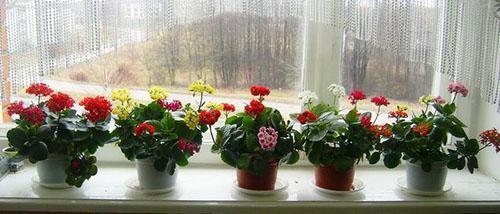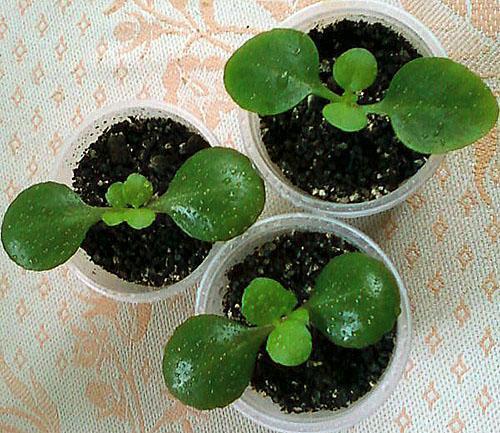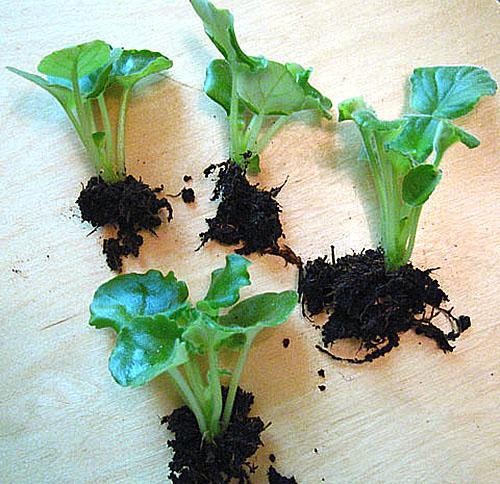Learning to care for the Kalanchoe at home
 The succulent plant, a native of the island of Madagascar, came to Russia with a merchant caravan. Kalanch means health in translation. The leaves of this foreign plant saved the sailor from tropical fever, and he took them on the road. Kalanchoe care at home is not very difficult. He became a resident of Russian window sills for decorativeness. The plant belongs to the Tolstyanka family, is a relative of radiola and stonecrop.
The succulent plant, a native of the island of Madagascar, came to Russia with a merchant caravan. Kalanch means health in translation. The leaves of this foreign plant saved the sailor from tropical fever, and he took them on the road. Kalanchoe care at home is not very difficult. He became a resident of Russian window sills for decorativeness. The plant belongs to the Tolstyanka family, is a relative of radiola and stonecrop.
Reproduction and plant care

 For reproduction, cuttings and ready-made mini-plants separated from the leaf blade are used:
For reproduction, cuttings and ready-made mini-plants separated from the leaf blade are used:
- Put the baby on the surface of the prepared substrate and sprinkle the base with earth.
- To water daily drop by drop with settled soft water for two weeks.
- Noticing the growth of the plant, stop daily watering and do it once a week a little.
 Cutting is done by selecting the apical segments. At the same time, cuttings kept in water for rooting grow worse than in wet sand. For rooting, a greenhouse with a microclimate is created, while the sand is moistened. After the roots appear, the plant is planted in a container. The pots for planting are selected taking into account the fact that each year it will be necessary to transfer the plant to a container larger by 1-2 cm. After a week, it will already be noticeable that the plant has begun to grow.
Cutting is done by selecting the apical segments. At the same time, cuttings kept in water for rooting grow worse than in wet sand. For rooting, a greenhouse with a microclimate is created, while the sand is moistened. After the roots appear, the plant is planted in a container. The pots for planting are selected taking into account the fact that each year it will be necessary to transfer the plant to a container larger by 1-2 cm. After a week, it will already be noticeable that the plant has begun to grow.
 When transplanting, you need to very carefully pull the flower out of the container - since it has very fragile leaves and stems. Is it necessary and how to transplant Kalanchoe at home? During pre-sale preparation, the plant is stimulated to bloom, the land is depleted and a transplant is necessary. It is necessary to transplant Kalanchoe into a pot larger than the previous one by 2-3 cm in diameter.
When transplanting, you need to very carefully pull the flower out of the container - since it has very fragile leaves and stems. Is it necessary and how to transplant Kalanchoe at home? During pre-sale preparation, the plant is stimulated to bloom, the land is depleted and a transplant is necessary. It is necessary to transplant Kalanchoe into a pot larger than the previous one by 2-3 cm in diameter.
Kalanchoe flower how to care and what it loves
 Good lighting without direct sunlight in summer will provide the plant with good chlorophyll photosynthesis. At the same time, the direct sunlight of the summer sun is destructive for him. The winter sun does not burn that much, and in winter the plants can stand on the south window. Leaving the Kalanchoe in the shade with poor lighting is not recommended, it depresses the plant. Flowering can not be expected.
Good lighting without direct sunlight in summer will provide the plant with good chlorophyll photosynthesis. At the same time, the direct sunlight of the summer sun is destructive for him. The winter sun does not burn that much, and in winter the plants can stand on the south window. Leaving the Kalanchoe in the shade with poor lighting is not recommended, it depresses the plant. Flowering can not be expected.
For abundant flowering from August to December, it is necessary to shorten the daylight hours of the plant to 10 hours with a bright lighting, that is, to create a Madagascar summer. From 8 to 18 hours the plant is in bright light, the rest of the time is under a hood or in a closet. Such conditions during the dormant period will help to achieve long-term abundant flowering.
There are other techniques on how to care for the Kalanchoe at home in order to achieve flowering:
- Watering once a month with fertilizers for flowering plants and cacti In August, increase the proportion of phosphorus in fertilizer mixtures.
- The temperature regime is within 18 degrees during the rest period.
- Pruning at the beginning of the dormant period in August.
- Compliance with the plant care cycles: in the spring, transplanting and feeding, in the summer, activation of growth, in the fall, the dormant period and pruning.
 The fresh air of the balcony, airing the apartment is pleasant for the flower. Therefore, Kalanchoe often adorns balconies with its greenery all summer long. It blooms in winter. Water the flower regularly, but not abundantly. It tolerates drought better than waterlogging. In winter, watering is carried out twice less often. Dust from the leaves is removed under the shower once a month or with a damp cloth. This flower does not like spraying, and the leaves with pubescence do not tolerate moisture at all. Only settled soft water is used.
The fresh air of the balcony, airing the apartment is pleasant for the flower. Therefore, Kalanchoe often adorns balconies with its greenery all summer long. It blooms in winter. Water the flower regularly, but not abundantly. It tolerates drought better than waterlogging. In winter, watering is carried out twice less often. Dust from the leaves is removed under the shower once a month or with a damp cloth. This flower does not like spraying, and the leaves with pubescence do not tolerate moisture at all. Only settled soft water is used.
The stems and leaves of the Kalanchoe are covered with a waterproof film. Therefore, in nature, these plants are used as a source of moisture in the desert. The sap of the plant is pleasantly sour and quenches thirst well. Crushed Kalanchoe leaves rub the skin from dehydration in the heat. The temperature range of the plant is 15 to 25 degrees.
The pruning mentioned in the plant care measures is very important for decorativeness. How to trim Kalanchoe at home when leaving, you can understand, knowing the meaning of the operation:
- Only after the cessation of flowering, they begin to form a beautiful crown, removing old peduncles and links of dried shoots with a sharp disinfected razor.
- Pruning is carried out in August, with the onset of a dormant period.
- Reduce daylight hours, lower temperatures, and water until December or budding.
 In this case, the resulting petioles can be used for rooting.
In this case, the resulting petioles can be used for rooting.
Who and what interferes with plant health
All problems can be divided into physiological ones, obtained with improper care, and diseases and pests brought in from the outside. At the same time, Kalanchoe, weakened by insufficient care at home, is vulnerable.
 Some of the reasons for the weakening of the plant are clearly identified. So, if the leaves become pale, thin and elongated, then the flower does not have enough light. If after flowering the plant froze, does not develop, is depressed, it needs transshipment into a large container and fertilizer. In the heat, the leaves die off, with overflow they begin to turn yellow. If the appearance of a flower speaks of prosperity, but there are no flowers, this is overfeeding.
Some of the reasons for the weakening of the plant are clearly identified. So, if the leaves become pale, thin and elongated, then the flower does not have enough light. If after flowering the plant froze, does not develop, is depressed, it needs transshipment into a large container and fertilizer. In the heat, the leaves die off, with overflow they begin to turn yellow. If the appearance of a flower speaks of prosperity, but there are no flowers, this is overfeeding.
The pests that annoy the Kalanchoe are scale insects, spider mites and worms. Moreover, such pests can completely destroy the plant. Using a special stick for houseplants "Doctor Verm", which is stuck into the ground, will help protect the flower from the pest. But the use of cleaning with a toothbrush, followed by the use of Aktara, Aktelik, Iskra and similar insecticides, will also help.
From diseases, mold can appear on warm, damp earth, in the chill - powdery mildew, root rot. In this case, you will have to use fungicidal preparations.